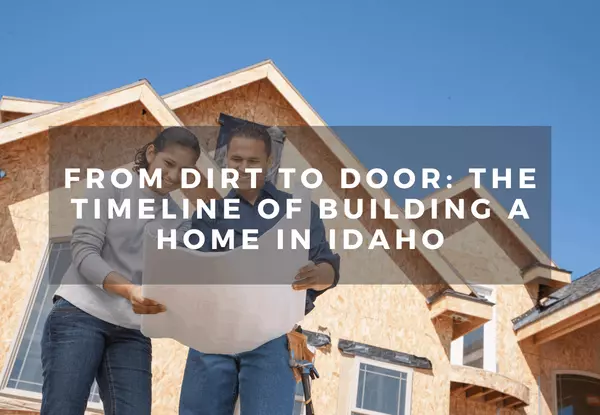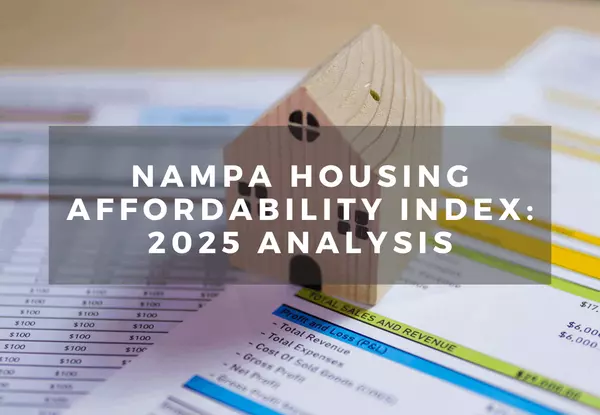1031 Exchange Opportunities in Treasure Valley: The 2025 Tax-Deferred Investment Guide to Growing Your Real Estate Portfolio

Unlocking Real Wealth: Why 1031 Exchanges Matter in Treasure Valley
If you’ve built equity in one or more properties in Idaho—or you’re holding out-of-state assets that aren’t performing—it’s time to talk strategy. And one of the most powerful tools in your belt as a real estate investor is the Section 1031 Like-Kind Exchange.
This guide will walk you through how to use a 1031 Exchange to defer capital gains taxes, scale your portfolio, and make the most of Treasure Valley’s high-growth markets. Whether you're holding a single rental in Boise or a multifamily in Nampa, this is how you level up without losing 20–30% of your gain to taxes.
What Is a 1031 Exchange?
At its core, a 1031 Exchange allows you to sell one investment property and defer paying capital gains taxes—as long as you reinvest the proceeds into a qualifying like-kind property.
Here’s what you gain:
-
No immediate tax on capital gains
-
More capital to reinvest
-
Leverage for bigger, better-performing assets
-
Ability to reposition your portfolio geographically or by asset class
And here in the Treasure Valley, investors are using this strategy to:
-
Trade underperforming California rentals for cash-flowing Idaho properties
-
Consolidate multiple small holdings into larger multifamily assets
-
Move equity into newer builds with fewer maintenance issues
The 1031 Exchange Process (Step-by-Step)
Step 1: Sell Your Investment Property
This must be real property held for investment or business purposes. Primary residences and flips don’t qualify.
Step 2: Identify a Qualified Intermediary (QI)
You can’t touch the money. A third-party QI holds the proceeds during the exchange.
Step 3: Identify Replacement Property
-
You have 45 days from the close of sale to identify up to three replacement properties
-
Must be of equal or greater value (including debt)
-
Property must be like-kind (any income-producing real estate)
Step 4: Close Within 180 Days
You must acquire the new property within 180 days of the original sale to complete the exchange.
What Qualifies as Like-Kind Property?
In real terms, “like-kind” just means investment real estate. That includes:
-
Single-family rentals
-
Duplexes and multifamily buildings
-
Commercial property
-
Land held for investment
-
Industrial space
-
Mixed-use buildings
So yes, you can sell a California rental condo and buy a fourplex in Meridian—it qualifies.
Why the Treasure Valley Is a 1031 Exchange Hotspot
1. Lower Prices, Higher Cap Rates
Compared to West Coast metros, Treasure Valley still offers:
-
4–7% cap rates on rental property
-
Affordable price per door
-
Lower taxes and operating costs
You can often trade one high-priced California or Seattle property for multiple Idaho assets with stronger cash flow.
2. Population and Job Growth
Boise, Meridian, Nampa, and Caldwell continue to attract:
-
Remote workers
-
Corporate relocations
-
Young families leaving high-cost cities
This migration fuels both rental demand and property appreciation—an ideal combo for long-term investors.
3. Portfolio Diversification
A 1031 exchange gives you a chance to shift:
-
From C-class to B-class neighborhoods
-
From older to newer construction
-
From single-family to multifamily
That’s not just smarter asset allocation—it’s a hedge against vacancy, maintenance, and market volatility.
Ideal 1031 Targets in Treasure Valley
Meridian: Turnkey 4-Plexes & Build-to-Rent
-
Asset Type: Newer multifamily (2015+)
-
Price Range: $750K–$1.1M
-
Why It Works: Low vacancy, modern amenities, higher rent potential
-
Best For: Passive investors, out-of-state exchanges
Boise Bench & West Boise: Value-Add Multifamily
-
Asset Type: Duplexes, triplexes, older 4-plexes
-
Price Range: $450K–$900K
-
Play: Light rehab + rent increases
-
Best For: BRRRR investors, long-term cash flow
Nampa & Caldwell: Cash Flow and Appreciation
-
Asset Type: 4–12 unit buildings
-
Price Range: $600K–$1.5M
-
Cap Rate: 6.5%–8%
-
Why It Works: Affordability, strong rent growth, low competition
Eagle and Star: Luxury Duplexes and High-Quality Tenants
-
Asset Type: Townhome-style duplexes
-
Price Range: $800K–$1.4M
-
Play: Upscale rentals with longer tenancies
-
Ideal For: Capital preservation and low maintenance portfolios
Financing 1031 Replacement Properties
Use the Right Lender
Many investors don’t realize that not all lenders can handle 1031 timelines effectively. We partner with:
-
DSCR lenders (no income verification)
-
Commercial banks (for 5+ units)
-
Bridge lenders (for fast closes)
-
Local lenders with Idaho-specific underwriting
Tip: Leverage Without Losing the Tax Advantage
Your total reinvestment must match or exceed the sale price—including loan amount + equity. So if you sold a $1M property with $400K in equity and $600K in debt, your replacement property must also carry $1M in value to avoid taxes.
Strategies to Multiply Your Portfolio with 1031
1. Consolidation Strategy
Sell multiple single-family homes and consolidate into:
-
A single 10-unit complex
-
A commercial property
-
A build-to-rent portfolio
Benefits: Easier management, increased cash flow, simplified asset base.
2. Diversification Strategy
Sell one large property and spread into:
-
A duplex in Boise
-
A fourplex in Nampa
-
Land for future development
Benefits: Lower risk, varied tenant bases, appreciation from multiple markets.
3. Laddering Strategy
Time multiple 1031s every few years to ladder your returns and:
-
Defer taxes indefinitely
-
Increase depreciation
-
Maximize leverage
This is how long-term investors build multi-million-dollar portfolios without giving Uncle Sam a cut until the very end.
1031 Mistakes to Avoid
-
Missing the 45-day ID window – Have properties lined up or under LOI before you close
-
Not hiring a qualified intermediary – This must be done before the sale
-
Touching the funds – Funds must go directly from escrow to QI
-
Downsizing in value – If you buy a cheaper property, you’ll owe tax on the difference
-
Failing to plan for financing – Get pre-approved early; timing is everything
Advanced Concepts
1031 into New Construction
Yes, you can 1031 into a new build—but the timeline is tight. You’ll need to:
-
Buy land and assign contract to QI
-
Have substantial improvements completed within 180 days
-
Work with a builder who understands the process
This can work incredibly well in build-to-rent communities or semi-custom duplexes.
DSTs (Delaware Statutory Trusts)
For truly passive investors, 1031s can be rolled into institutional-grade properties via DSTs:
-
Commercial buildings
-
Industrial parks
-
Multi-state portfolios
Returns are typically 4–6%, with no management needed. Great for investors aging out of active management.
Combining 1031 with Cost Segregation
After closing, apply a cost segregation study to maximize depreciation:
-
Offset cash flow
-
Reduce taxable income
-
Increase ROI over the first 5 years
This is a powerful combination for high-income investors or those with multiple properties.
Curtis’ Final Word: Use Your Equity Intentionally
You’ve worked hard to build equity in your investment property. Now it’s time to let that equity work harder for you.
With the right 1031 exchange strategy, you can:
-
Defer six-figure capital gains taxes
-
Upgrade to better assets
-
Grow your monthly cash flow
-
Build generational wealth
And you don’t have to do it alone. As a top-producing real estate advisor in Idaho, I’ve helped clients:
-
Sell property in CA, WA, and OR
-
Identify replacement assets in the Treasure Valley
-
Execute exchanges with speed, accuracy, and confidence
Let’s build your portfolio the tax-smart way.
Ready to explore 1031 exchange opportunities in Boise, Meridian, Nampa, or Eagle?
📲 Call or text Curtis Chism at (208) 510-0427
📥 Ready to relocate remotely? Download our Boise Relocation Guide
Categories
Recent Posts










